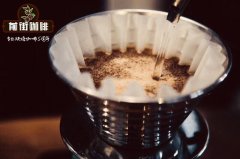Costa Rican Arabica Coffee Beans: What are the Flavors of Costa Rican Black Honey Treated Coffee Beans?

Professional coffee knowledge exchange more coffee bean information please follow the coffee workshop (Wechat official account cafe_style)
Front Street-Costa Rican Coffee introduction
Costa Rica is bounded by Nicaragua to the north, Panama to the south, the Caribbean to the east and the Pacific Ocean to the west.
The coffee produced in Costa Rica is all Arabica varieties. Among them, the varieties with high resistance to leaf rust, such as Kaddura. Among them, varieties with high resistance to leaf rust, such as Kadula or Kaduai, accounted for more than 80%. One of the characteristics is high planting density and few fallen leaves. Costa Rica grows Kaddura in areas with higher elevations, while lower areas grow Kaduai, etc.-selecting suitable varieties according to geographical conditions for planting and production.
The treatment of Costa Rican coffee beans is also different from that of other countries, and honey treatment is mainly used throughout the country. What is honey treatment?
The coffee bean is the core of the coffee fruit, the outermost layer of the fruit is the peel, under the skin is the pulp, and under the pulp is pectin, which is a thick gelatinous layer that tightly wraps the coffee beans. because this layer of mucous membrane is sticky and the powdered sugar is extremely high, it is called "honey" by people.
Honey treatment refers to the process of making raw beans with mucous membrane for sun drying, which is between the sun treatment (whole fruit drying) and water washing (decomposing the colloid with water). This treatment keeps the water clean, although the brightness decreases, but the sweetness of coffee has been increased.
We usually see the treatment of honey: yellow honey, red honey, black honey.
Yellow honey: about 40% of the pectin is removed; the drying method requires the most direct heat absorption, receives the most light drying, and lasts for about 8 days to reach a stable water content.
Red honey: about 25% of the pectin is removed; it takes longer to dry than yellow honey, and reduces direct exposure to sunlight, even in shading sheds, lasting about 12 days.
Black honey: hardly remove pectin; dry for the longest time, lasting at least 2 weeks, with a cover to avoid too strong sunlight, prevent drying too fast, and make sugar conversion more fully.
Knowledge: why other countries seldom use honey treatment, except that the process is vulnerable to pollution and mildew, need to closely watch the official throughout the process, constantly turn over, in order to avoid bad fermentation flavor, but also rely on the local weather and climate, the weather must be dry and sufficient sunshine, otherwise it is not suitable for honey treatment.
In short: Qianjie is a coffee research hall, happy to share the knowledge about coffee with you, we share unreservedly just to make more friends fall in love with coffee, and there will be three low-discount coffee activities every month. The reason is that Qianjie wants to make more friends drink the best coffee at the lowest price, which has been Qianjie's tenet for 6 years!
END
Important Notice :
前街咖啡 FrontStreet Coffee has moved to new addredd:
FrontStreet Coffee Address: 315,Donghua East Road,GuangZhou
Tel:020 38364473
- Prev

What's the magic of Colombian washed coffee beans? what's so unique about Colombian Rose Summer?
Professional coffee knowledge exchange more coffee bean information please follow the coffee workshop (Wechat official account cafe_style) front street-Colombian coffee introduction Colombian coffee most of the water washing treatment, each small farmer family has a small special processor (Ecomill or Eco-Pulper), the harvested coffee fruit is poured into it, not only remove the peel and pulp, but also go to
- Next

Costa Rican coffee sour? Costa Rican coffee beans taste sour and balanced.
Professional coffee knowledge exchange more coffee bean information please follow Coffee Workshop (Wechat official account cafe_style) Front Street-Costa Rica Coffee introduction Costa Rica belongs to Central America geographically, with its scenic tropical rain forest, warm and hearty people, and coffee famous for its high quality in the world market. Combining natural resources, people combine agriculture with commerce
Related
- Beginners will see the "Coffee pull flower" guide!
- What is the difference between ice blog purified milk and ordinary milk coffee?
- Why is the Philippines the largest producer of crops in Liberia?
- For coffee extraction, should the fine powder be retained?
- How does extracted espresso fill pressed powder? How much strength does it take to press the powder?
- How to make jasmine cold extract coffee? Is the jasmine + latte good?
- Will this little toy really make the coffee taste better? How does Lily Drip affect coffee extraction?
- Will the action of slapping the filter cup also affect coffee extraction?
- What's the difference between powder-to-water ratio and powder-to-liquid ratio?
- What is the Ethiopian local species? What does it have to do with Heirloom native species?

